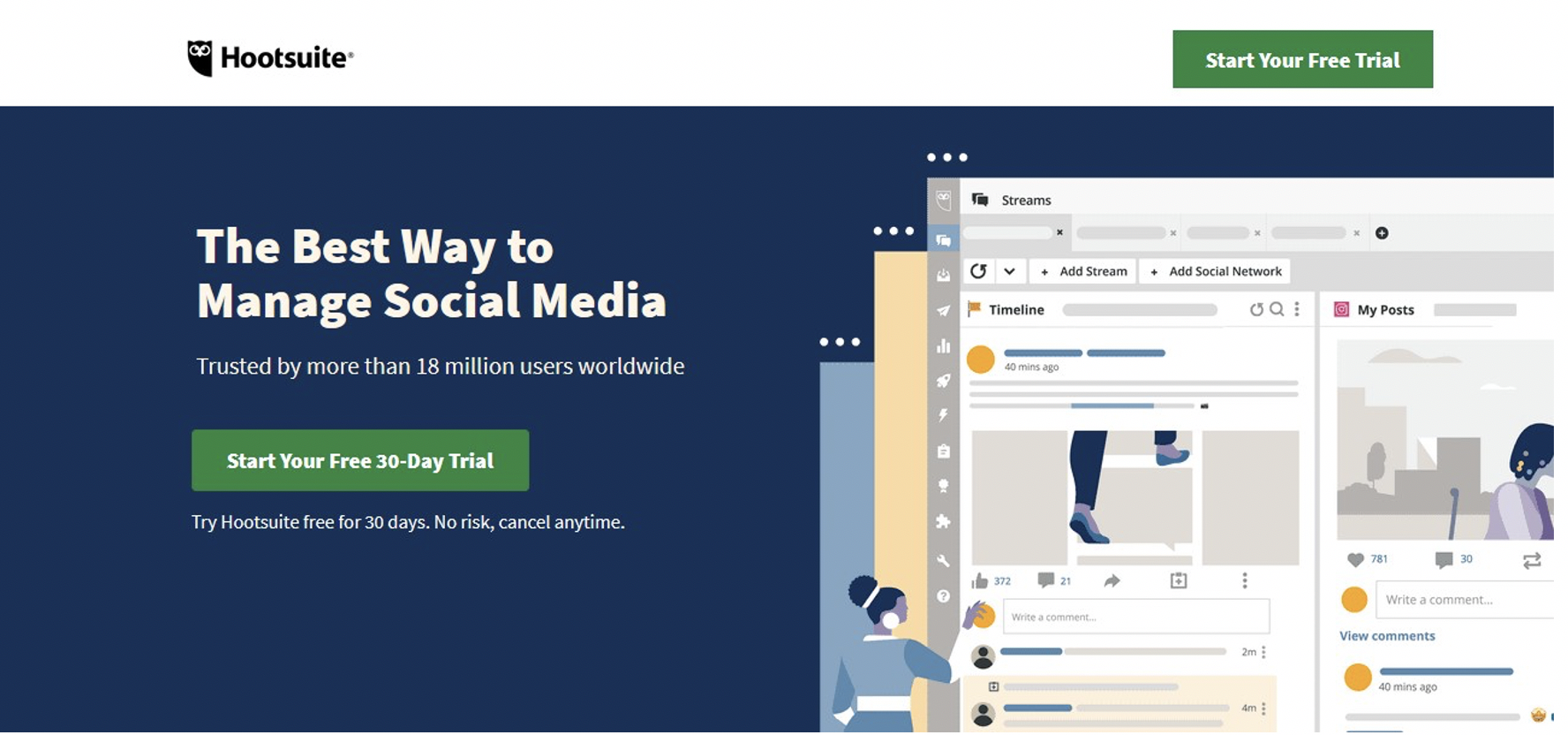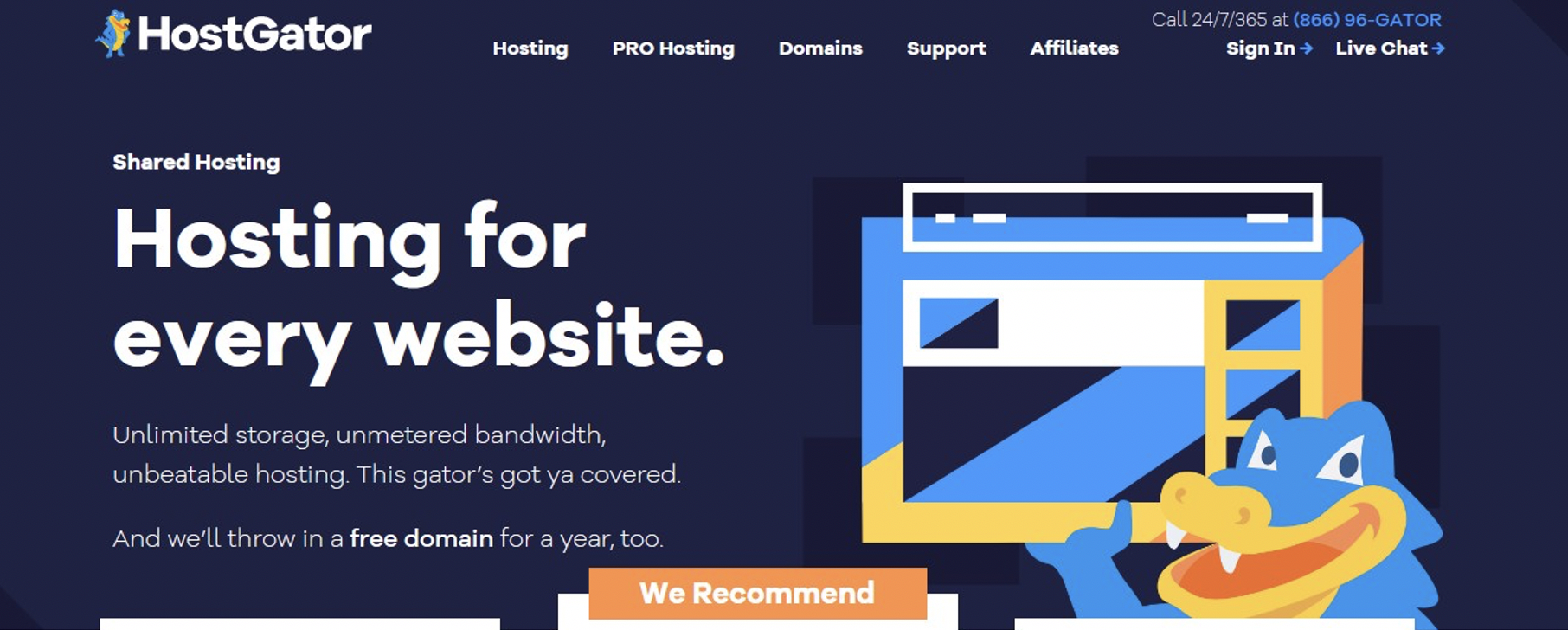This post discusses the best tools for building your personal brand.
Whether you’re a business owner, an executive, a freelancer, or an employee, having a personal brand identity can take your influence o the next level and help you make more money. Unfortunately, building your brand can be a daunting task.
Where do you start? What tools should you use to get there?
I’ve curated a list of my favorite brand building tools to help you get started.
PS Feel free to watch the video version here:
The BEST Tools for Building Your Personal Brand (Build Your Business from Ground Up)
For Your Blog: Hostgator
Hostgator is a web hosting platform that you can use to get started with your blog. The platform was developed in 2002 by a Florida Atlantic University student named Brent Oxley and in 2012 it was acquired by Endurance International Group, which you may also know as the owner of other hosting companies like Bluehost.
Hostgator is specifically designed so that users end up with an awesome WordPress blog.
Why do I recommend a platform that is specific to WordPress? To put it simply, it’s because WordPress is the way to go when it comes to blogs. The platform is SEO optimized and much easier to manage than anything that could be created using other hosting sites like Wix or Squarespace. WordPress is also super flexible with plugins and has one for nearly every need.
Going back to Hostgator itself, though, it’s important to note that the platform is ideal for beginners. Of course, it offers plenty of options for those who are further along in their brand building journey but it’s especially beneficial for anyone just starting out.
Benefits of Hostgator:
- Discounts for first time users
- Fast server speeds
- 24/7 customer support with multiple support channels
- Free installs and site migration
- Hosting that is nearly unlimited
For Your Courses: Teachable
Teachable is an online platform that allows users to set up and publish online courses through which they can connect with students and earn money through being a virtual teacher.
Currently, Teachable has more than 7,500 teachers and 20,000 programs, with more than 4 million people tuning in as students. There has been roughly $50 million made on the platform. Great, but how much do successful teachers make, you ask?
The top-rated teachers on Teachable make over $75,000 in revenue. Just imagine how helpful that side income could be!
On Teachable, you can teach almost anything. For example, there are professionals who use the platform to share financial knowledge, teach new languages, and to teach people new hobbies such as knitting, painting, and photography. Trust me when I say that on Teachable the sky’s the limit.
One of the best things about the platform is that you don’t have to be a certified teacher to teach. As long as you have valuable knowledge surrounding a topic, you can be a teacher.
However, it’s always a good idea to keep in mind that some topics, regardless of how much knowledge you have, are best taught by professional teachers. This can include English – more specifically, teaching English to those learning it as a second language.
Benefits of Teachable:
- Anyone can do it
- Quality customer service
- Easy-to-use course builder interface
- Free account creation
- Integration with other programs
For Your Email Marketing: ConvertKit
Created by Nathan Barry, ConvertKit is a full-feature ESP (Email Service Provider). ConvertKit is one of the most rapidly expanding ESPs on today’s market and, when compared to other providers like MailChimp and Infusionsoft, is also one of the more user-friendly and easy to manage providers.

ConvertKit is free to get started with but also offers a number of paid plans, witch each offering a variety of features and a grander scale than the one before it. Typically, pricing on ConvertKit is based upon how many email subscribers you’re trying to manage.
In terms of available features, ConvertKit offers customizable sign-up forms and landing pages, as well as campaign automation and an email designer. The campaign automation feature is one of the most beloved features of the provider, with many users upgrading to paid versions of it to have access to that one feature.
Benefits of ConvertKit:
- User-friendly interface
- Free to start using
- In-depth paid plans
- Full-scale email management
For Pinterest Marketing: Tailwind
Tailwind is a complete marketing toolkit for small businesses and bloggers. It is basically a Pinterest scheduling tool that allows users to publish pins without actually doing the work, which helps drive traffic, leads, and sales from the platform.
Tailwind uses a unique marketing tool that acts as a ton of tools all wrapped into one. By signing up, you’re welcoming the Tailwind software to:
- Discover related content
- Schedule your posts
- Post at optimum times
- Monitor conversations on your pins
- Repeat content in intervals that you’ve specified
- Measure results
- Amplify your reach
With Tailwind, you don’t need to give any personal details. The only thing you need to provide is your Pinterest account. From there, Tailwind analyzes your content and niche and comes up with a Smart Schedule based off the times during which your content sees the most engagement.
You can schedule anywhere from 5 to 50 pins per day with the free version of Tailwind but with the paid, annual subscription, you can schedule as many pins as you want.
Benefits of Tailwind:
- No requests for personal data
- Affordable annual subscription
- Tons of back-end technology
- Easy to use platform
Tools for Instagram
Canva
Canva is a versatile online graphic design platform that uses a simple drag and drop interface and is completely free to sign up for. Using Canva, you can make just about anything that requires graphics and text including business cards, invitations, Zoom backgrounds, posters, t-shirt designs, and, of course, Instagram posts!

That’s right – you can use Canva to create targeted Instagram posts containing text and cute graphics without any knowledge of Photoshop or other complex graphic software. You can choose from various templates and customize them how you like, changing everything from the color scheme to then font and size of the text displayed.
Alternatively, you can opt to create your visions from scratch, choosing every aspect of the size, layout, and design.
If you’re happy with the free version, you’d be thrilled with the paid version of Canva, as it takes its most popular features up a few notches and throws in a few extras.
Personally, Canva is a relatively affordable expense that I fully believe should be invested in – especially if you spend a lot of time hashing out the details of posts.
Benefits of Canva:
- Unmatched versatility
- Creative freedom
- Simple drag and drop interface
- Affordable monthly plans
UpWork
Upwork is an international freelancing platform. It serves as a place for talented freelancers and employers to connect, develop a working relationship, and harness their success. On it, you can find freelancers and jobs from virtually any niche including video editing, writing, teaching, marketing, virtual assisting, and design.

That being said, UpWork is a great place to find freelancers to handle the various aspects of your budding Instagram account. You can hire someone to manage it, to create content for it, to reply to DMs, and to build it from the ground up.
Your freelancers are paid directly through the website and then allowed to cashout using PayPal or bank transfers as soon as funds are available to them. You, as the employer, pay your freelancer after they have delivered work that fits your standards. Should there be any problems, UpWork’s dedicated team of customer service reps are there to take over.
Benefits of Upwork:
- International marketplace with freelancers from more than 30 countries
- Payment protection plans for both you and your freelancer
- Excellent customer service
- Versatile freelancers available 24/7
- Affordable monthly plans and fees
Hootsuite
Hootsuite is similar to Canva in terms of how you can use it to benefit your business through Instagram. To get you started, Hootsuite offers you a free 30-day trial and after that, plans range from $59-$599 per month.

You can use Hootsuite to optimize your photos and then schedule them from the dashboard so that they publish ton your Instagram account exactly when you want them to. Or you could use the platform for creating quality stories and carousels, as Hootsuite lets you take full control over the design and publishing processes.
As awesome as the design capabilities of Hootsuite are, the platform can also be used for the most complex, less interesting aspects of Instagram, too. For example, you can use it to monitor hashtags, competitors, and customers, as well as measure your post metrics and track your progress.
Benefits of Hootsuite:
- Affordable monthly plans
- 30-day free trial
- Built-in post scheduling
- Post and story creation
- Logistics monitoring
Tools for Time Management
Google Keep
Rolled out in 2013, Google Keep was designed to revolutionize the way we took and organized notes. Since then, though, it’s faced a lot of competition and has managed to fall into the background.

For small businesses, though, Keep can be incredibly useful. For starters, it allows you to start making notes on your phone (without having to use the cumbersome built-in Notes app that all smart devices come with) and then pick up where you left off from your laptop or PC later.
Keep also integrates with Google’s other platforms, which means that you can share Keep documents between Drive, Docs, and Gmail. There’s a handy widget that you can make use of, too, as well as a special technology that allows you transcribe text from images – social media images, perhaps?
Benefits of Google Keep:
- Google platform integration
- Note taking on the go
- Text from image transcription
- Easy to navigate
Google Sheets
Google Sheets is one of the more well-known Google products. It’s used by big businesses and individuals alike and can be used for a variety purposes ranging from employee contact lists to job details and schedules.

Sheets can be beneficial to your business in more ways than you realize. Once you master it, you can use it to organize important data, create budgets, manage projects and delegate tasks, create calendars, track employee hours, analyze data, and manage orders and invoices among a ton of other things.
Basically, if you can fit it into a table, you can get it done with Google Sheets.
Benefits of Google Sheets:
- Versatile use
- Affordable price
- Google integration
- Allows for collaboration
Conclusion
While it’s not required to use any of the tools I’ve just mentioned, they are extremely helpful and can do wonders for the growth of your business. They’ve done a lot for me, helping me grow my platforms and anchor my success – and they could do the same for you!
The good thing is that, if you’re not willing to make a paid commitment, most of them offer free versions that allow you to “try before you buy”. I’d highly recommend taking advantage of this fact; chances are that you’ll end up falling in love with what they can do for you.
We hope you enjoyed this post on the best tools for building your personal brand. If you have any thoughts on other tools, comment below!




